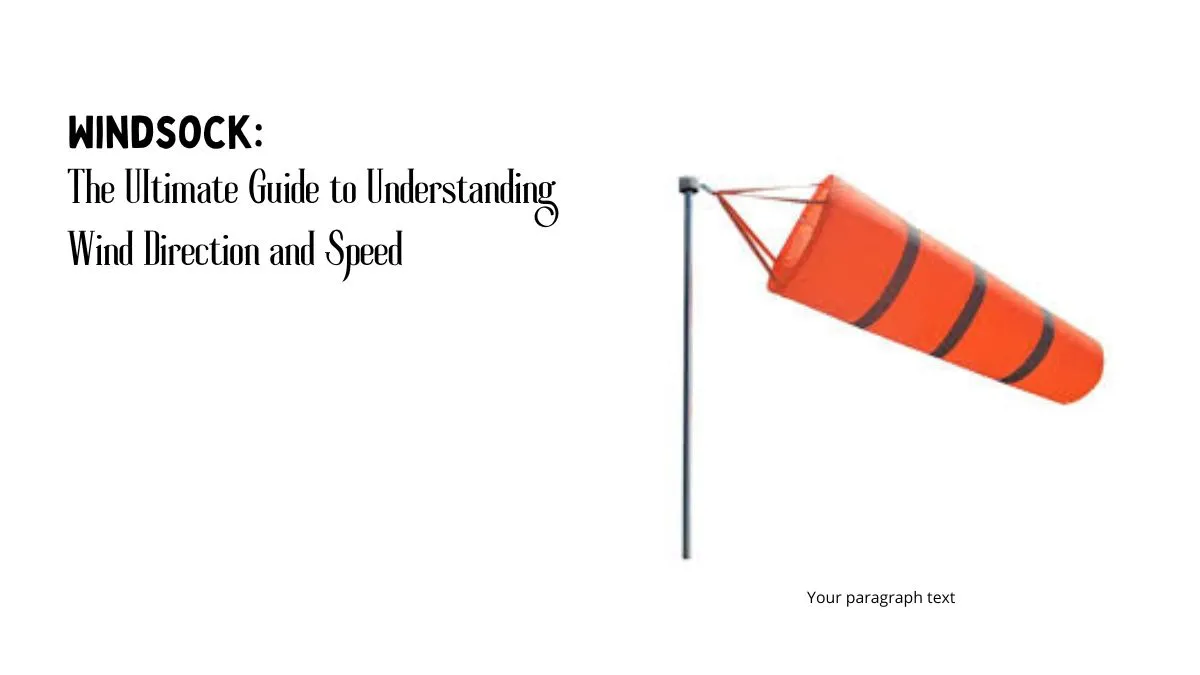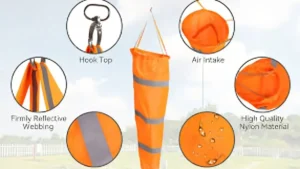GENERAL
Windsock: The Ultimate Guide to Understanding Wind Direction and Speed

Ever noticed those fabric tubes at airports, fluttering in the wind? That’s a windsock. It might look simple, but it’s a powerful tool. A windsock tells us where the wind is coming from and how strong it is. Pilots, sailors, and weather experts rely on it. Even industries handling gases use it for safety. Why? Because wind direction matters. A sudden shift can change everything. You don’t have to be a professional to use one, though. Knowing how to read a windsock can help anyone. It can make outdoor adventures safer. It’s been around for centuries, yet many still overlook its importance. Stick around. Let’s dive into the world of windsocks. You’ll never see them the same way again.
What is a Windsock?
A windsock is more than just fabric on a pole. It’s a basic yet brilliant wind indicator. It moves with the wind, showing both its direction and strength. The wider the opening, the stronger the wind. Originally, ancient Chinese and Romans used similar devices in warfare. Today, windsocks are found at airports, highways, and industrial sites. Even hobbyists use them for flying kites or paragliding. They’re not just functional; they can be decorative, too. Some businesses even use branded windsocks for advertising. They come in various materials, from nylon to polyester. Some are reinforced to withstand harsh weather. Whether for aviation, safety, or fun, a windsock remains a trusted tool. Simple, effective, and reliable—just as it should be.
How Does a Windsock Work?
A windsock works with the wind, not against it. When the wind blows, it inflates the sock, pointing in the opposite direction. That’s how you tell where the wind is coming from. The stronger the wind, the straighter the windsock. Light winds? It droops. Most windsocks are designed with multiple rings inside. These rings help keep the shape steady. You don’t need batteries. No fancy tech. Just wind and fabric. Pilots use it before landing. Factories use it for gas leak safety. Even farmers rely on it. It’s a simple science. Yet, it saves lives. Next time you see one, take a moment. It’s telling you a story—about the wind, about safety, about nature’s force.
Types of Windsocks
Not all windsocks are the same. Some are built for airports. Others for backyard fun. Aviation windsocks follow strict regulations. They need high-visibility colors, like orange and white. Industrial windsocks are often fire-resistant, used in oil refineries and chemical plants. Then there are decorative ones. You’ll see them at gardens, festivals, and even on boats. Materials vary, too. Some are heavy-duty polyester. Others are lightweight nylon. Some last years. Some fade within months. Size matters as well. Large ones are better for airports. Smaller ones work for personal use. Choosing the right windsock depends on where and why you need it. One thing’s certain: every windsock has a purpose. Know yours.
Uses of Windsocks
Windsocks are lifesavers. Literally. Airports rely on them for safe landings. Pilots check windsocks to avoid dangerous crosswinds. At chemical plants, they help detect gas leaks. Firefighters use them to track smoke direction. Even farmers watch windsocks before spraying pesticides. In sports, skydivers and paragliders depend on them. Some motorcyclists install mini windsocks on bikes. It’s not just about safety. Fishermen use them to read sea winds. Farmers check them before burning fields. Even theme parks use them for aesthetics. Windsocks do more than just wave in the wind. They guide, warn, and inform. Every gust of wind tells a story. And the windsock? It’s the narrator.
How to Read a Windsock Correctly
Reading a windsock is easy, yet it can be lifesaving. The open end always points where the wind is coming from. That’s the first rule. If the windsock is fully extended, expect strong winds. If it barely lifts, the wind is weak. Some windsocks have stripes—each section represents a different wind speed range. A half-filled windsock? Light breeze. Fully stretched? High winds. But here’s the catch: windsocks react instantly. Gusts can make them flicker unpredictably. That’s why pilots observe them for a while before deciding. Whether you’re a pilot, a hiker, or just curious, knowing how to read a windsock gives you an edge. Nature always sends signals. You just need to read them right.
Materials Used in Windsocks
Not all windsocks are built the same. The material matters. Airports prefer heavy-duty polyester—it lasts longer under the sun and rain. Nylon is another option, lightweight yet durable. Industrial sites use flame-resistant windsocks. Why? Because they deal with hazardous gases. Cheaper windsocks fade quickly. Harsh UV rays can break them down. High-quality ones come with weather-resistant coatings. Some even have reinforced stitching to withstand strong winds. A good windsock isn’t just about looks; it’s about function. A torn or faded windsock? It can mislead, creating serious risks. Choosing the right material means getting accurate readings, every time. Whether for safety or aesthetics, never compromise on quality. Winds change, but a good windsock should last.

How to Install a Windsock
Installing a windsock isn’t complicated. But placement is key. Too low? It won’t catch the wind properly. Too high? It might be hard to maintain. First, pick an open space. No obstructions. Trees or buildings can block wind flow. Next, choose a sturdy pole—metal ones last longer. Some installations need rotating frames, so the windsock moves freely. Secure the pole into the ground or attach it to a stable structure. Finally, mount the windsock using clips or fasteners. Done right, it will give you accurate wind readings. A poorly placed windsock? It’s as good as useless. Take your time. A little effort means better performance, and in some cases, it can save lives.
How to Maintain and Replace a Windsock
A windsock works hard, facing sun, rain, and strong winds daily. Regular maintenance is a must. First, check for fading. UV rays weaken fabric. If colors fade, replace it—it won’t be visible from afar. Next, look for tears. Even small ones can grow fast. Strong wind can rip a weak windsock apart in seconds. Clean it occasionally. Dust and dirt make it heavy, reducing its movement. Some windsocks come with weatherproof coatings, but they wear off. Reapply if needed. Also, inspect the pole. Rust can weaken it over time. A damaged windsock is dangerous. It can give false wind readings, leading to accidents. Keep it in top shape. When in doubt, replace it.
Where to Buy the Best Windsocks?
Need a windsock? You’ve got options. Online stores offer a variety—aviation-grade, decorative, industrial. Amazon, eBay, and specialty aviation shops stock them. But quality varies. Cheaper ones fade fast. Always check reviews. Want a durable one? Go for brands that supply airports or industrial sites. Hardware stores sometimes carry them, but choices are limited. Price depends on size, material, and durability. A good aviation windsock? Expect to pay more. But it’s worth it. You don’t want one that tears after a few storms. Whether online or in-store, always prioritize quality. A windsock is an investment. Buy smart.
Conclusion
A windsock might seem like just a piece of fabric, but it’s much more. It tells a story—of wind direction, speed, and even danger. Pilots rely on them. Industrial workers trust them. Adventurers use them. Whether for safety, sports, or just curiosity, understanding windsocks gives you an edge. They’re simple yet effective, old yet reliable. With proper care, they last years. Whether buying one or making your own, a windsock is a tool worth having. Next time you see one, don’t ignore it. Watch how it moves. Feel the wind. Because sometimes, the simplest things speak the loudest.
-

 BIOGRAPHY7 months ago
BIOGRAPHY7 months agoBehind the Scenes with Sandra Orlow: An Exclusive Interview
-

 HOME1 year ago
HOME1 year agoDiscovering Insights: A Deep Dive into the //vital-mag.net blog
-

 HOME1 year ago
HOME1 year agoSifangds in Action: Real-Life Applications and Success Stories
-

 BIOGRAPHY1 year ago
BIOGRAPHY1 year agoThe Woman Behind the Comedian: Meet Andrew Santino Wife




























